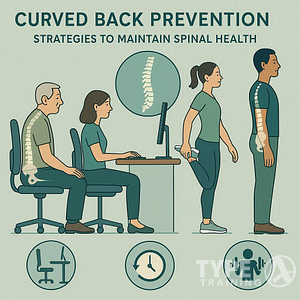Are you tired of dealing with high rates of sick leave abuse in your workplace? Sick leave abuse can lead to decreased productivity, increased healthcare costs, and a general negative impact on your company’s bottom line. Fortunately, there is a solution that can help reduce sick leave abuse and improve overall employee health: corporate fitness programs.
Corporate fitness programs have been shown to have a significant impact on reducing sick leave abuse in the workplace. By encouraging employees to exercise regularly and adopt healthier lifestyles, corporate fitness programs can help reduce the incidence of illness and injury, leading to fewer sick days and increased productivity. Additionally, corporate fitness programs can help improve employee morale and job satisfaction, leading to increased retention rates and a more positive work environment.
If you’re looking for ways to reduce sick leave abuse and improve employee health and productivity, a corporate fitness program may be the answer. With a wide range of options available, from on-site gym facilities to virtual fitness classes, there’s a corporate fitness program that can meet the needs of your organization and help you achieve your goals. So why not invest in the health and wellness of your employees and reap the benefits of reduced sick leave abuse and increased productivity?
Popular posts:
Understanding Sick Leave Abuse
Sick leave is a benefit provided by many employers, including corporations, to allow employees to take time off work due to illness or injury. However, sick leave abuse occurs when employees misuse this benefit for reasons other than illness or injury.
Sick leave abuse can take many forms, such as excessive or habitual absences, patterns of absences, or using sick leave to take unscheduled days off. It can also include using sick leave to extend a vacation or to avoid working on a project or task.
Management plays an important role in preventing sick leave abuse by monitoring employee absences, identifying patterns of abuse, and taking appropriate disciplinary action. Disciplinary action can range from counseling to termination, depending on the severity and frequency of the abuse.
It is important for corporations to have clear policies and procedures in place regarding sick leave abuse, including how it will be identified, investigated, and addressed. These policies should be communicated clearly to all employees, so they understand the consequences of sick leave abuse and the importance of using sick leave properly.
In summary, sick leave abuse can have a negative impact on both the employee and the corporation. It is important for corporations to take proactive measures to prevent sick leave abuse, including implementing clear policies, monitoring employee absences, and taking appropriate disciplinary action when necessary.
The Impact of Sick Leave Abuse on Companies
(image credit: businessmanagementdaily.com)
Sick leave abuse can have a significant impact on companies. When employees take excessive sick leave, it can lead to decreased productivity and increased absenteeism. This, in turn, can lead to decreased profit and increased costs for the company.
According to the Business Group on Health, absenteeism costs employers an average of $1,685 per employee per year in direct costs. This includes the cost of paid sick leave, replacement workers, and lost productivity. However, the indirect costs of absenteeism can be even higher, including decreased morale, decreased productivity, and increased turnover.
Sick leave abuse can also have a negative impact on employee retention. If employees feel that their colleagues are abusing sick leave policies, it can lead to resentment and decreased morale. This can lead to increased turnover and decreased retention rates.
One way to combat sick leave abuse is to implement a corporate fitness program. By encouraging employees to adopt healthy lifestyles, companies can reduce the amount of sick leave taken by their employees. This, in turn, can lead to increased productivity and decreased absenteeism.
In addition, corporate fitness programs can have a positive impact on employee morale and retention. By providing employees with opportunities to improve their health and well-being, companies can create a more positive and supportive workplace culture.
Overall, sick leave abuse can have a significant impact on companies. By implementing a corporate fitness program, companies can reduce the amount of sick leave taken by their employees, increase productivity, and improve employee morale and retention.
Role of Corporate Fitness in Reducing Sick Leave Abuse
(image credit: thelelawblog.com)
Corporate fitness programs play a crucial role in reducing sick leave abuse. By promoting well-being and exercise, such programs can help employees stay healthy and reduce the likelihood of taking sick days.
Research has shown that corporate wellness programs can lead to a significant decrease in absenteeism due to illness. For example, a study by the Harvard Business Review found that for every $1 invested in people through wellness programs, $6 was saved in company healthcare costs.
In addition to reducing the number of sick days taken, corporate fitness programs can also improve employee morale and job satisfaction. When employees feel that their employer cares about their well-being, they are more likely to be engaged and productive at work.
To be effective, corporate fitness programs should be tailored to the specific needs of the employees. This may involve offering a variety of fitness options, such as yoga classes, gym memberships, or on-site fitness facilities.
It’s also important to provide education and resources to employees to help them maintain a healthy lifestyle. This may include nutrition counseling, stress management training, or smoking cessation programs.
Overall, implementing a corporate wellness program that includes fitness and well-being initiatives can be a valuable tool for reducing sick leave abuse and promoting a healthier, more productive workforce.
Influence of Well-Being and Mental Health
(image credit: https://vitalityworks.health)
Maintaining a healthy body is not just about physical health, but also mental health. Exercise can have a positive impact on mental health by reducing symptoms of depression and anxiety. This can lead to a reduction in unplanned mental health days, which can significantly reduce sick leave abuse.
Stress relief from exercise decreases depression and anxiety
Exercise has been shown to reduce the symptoms of depression and anxiety by releasing endorphins and reducing stress hormones. Regular exercise can also increase self-esteem and confidence, which can lead to a more positive outlook on life. This can help employees cope with stress and anxiety in the workplace, leading to a reduction in unplanned mental health days.
Improved mental clarity reduces unplanned mental health days
Exercise can also improve mental clarity and focus, which can lead to increased productivity and engagement in the workplace. This can help employees stay focused and motivated, reducing the likelihood of unplanned mental health days. Additionally, exercise can improve sleep quality, which can lead to a more rested and refreshed workforce.
Overall, promoting well-being and mental health in the workplace can have a significant impact on the reduction of sick leave abuse. By providing opportunities for exercise and stress management, employers can help improve morale, engagement, and productivity in the workplace.
Health Education
(image credit: elmhurst.edu)
As a company, investing in your employees’ health education can lead to a reduction in sick leave abuse. Wellness workshops are an excellent way to teach preventative care and self-treatment, which can reduce the risk of illness and injury.
Wellness workshops teach preventative care and self-treatment
Wellness workshops can cover a wide range of topics, from healthy eating and exercise to stress management and mental health. By providing employees with the tools and knowledge they need to take care of their physical and mental health, companies can reduce the risk of illness and injury.
For example, a workshop on healthy eating can teach employees about the importance of a balanced diet and the role of different nutrients in maintaining good health. By learning how to make healthy food choices, employees can reduce their risk of developing chronic diseases such as diabetes, heart disease, and obesity.
Similarly, a workshop on stress management can teach employees techniques such as meditation, deep breathing, and mindfulness to help them cope with stress. By reducing stress levels, employees can improve their mental health and reduce their risk of developing stress-related illnesses such as anxiety and depression.
Knowledge reduces unnecessary doctor visits
Another benefit of investing in employee health education is that it can reduce the number of unnecessary doctor visits. When employees have a good understanding of their health and how to take care of themselves, they are less likely to seek medical attention for minor illnesses or injuries.
For example, if an employee knows how to treat a minor cut or scrape, they may not need to visit a doctor or urgent care center. This not only saves the employee time and money but also reduces the strain on the healthcare system.
In addition, employees who are knowledgeable about their health are more likely to seek medical attention when necessary. By recognizing the signs of serious illness or injury, employees can get the care they need before their condition worsens.
Overall, investing in employee health education is a smart move for companies looking to reduce sick leave abuse. By teaching preventative care and self-treatment, companies can reduce the risk of illness and injury, while also reducing the number of unnecessary doctor visits.
Social Accountability
Encouraging social accountability can be an effective way to reduce sick leave abuse and increase employee attendance. Two ways to foster social accountability in the workplace are through buddy systems for exercise and social commitments.
Buddy systems for exercise keep people motivated to attend work
Establishing a buddy system for exercise can help increase motivation to attend work and reduce absenteeism. When employees have a workout partner, they are more likely to stick to their fitness goals and feel accountable to someone else. This can lead to improved physical health and a reduction in sick leave abuse.
In addition, exercise has been shown to have mental health benefits, including reducing stress and anxiety. By encouraging exercise through a buddy system, employers can help employees manage their mental health and reduce the likelihood of taking sick leave for mental health reasons.
Social commitments discourage calling in sick
Social commitments, such as team projects or group events, can also help reduce sick leave abuse. When employees feel like they are part of a team, they are less likely to call in sick and let their team down. This can lead to increased attendance and a more positive work culture.
Employers can foster social commitments by organizing team-building events, encouraging collaboration on projects, and promoting a sense of community in the workplace. By emphasizing the importance of teamwork and social connections, employers can help reduce sick leave abuse and improve employee attendance.
In summary, establishing social accountability in the workplace can be an effective way to reduce sick leave abuse and increase employee attendance. Buddy systems for exercise and social commitments are two ways to foster social accountability and improve the overall health and well-being of employees.
Legal Aspects of Sick Leave
https://youtu.be/XrSHkk1CAz8?si=cs1Rrjfj4pdnP05i
When it comes to sick leave, there are various legal aspects that employers and employees need to be aware of. One of the most important laws to understand is the Family and Medical Leave Act (FMLA). Under this law, eligible employees are entitled to up to 12 weeks of unpaid leave per year for a serious health condition, to care for a family member with a serious health condition, or for the birth or adoption of a child. Employers must provide job protection and maintain health benefits during this time.
It’s important to note that not all health conditions qualify for FMLA leave. A serious health condition is defined as an illness, injury, impairment, or physical or mental condition that involves inpatient care or continuing treatment by a healthcare provider. This means that minor illnesses or injuries may not qualify for FMLA leave.
In addition to FMLA, some collective bargaining agreements may also address sick leave policies. These agreements are negotiated between the employer and the union representing the employees and may provide additional protections or requirements related to sick leave.
Employers may also require documentation for sick leave, particularly when it involves caring for a family member. For example, an employer may require an employee to provide documentation of their relationship with the family member in question.
Overall, it’s important for both employers and employees to understand the legal aspects of sick leave to ensure compliance with relevant laws and policies.
Benefits and Drawbacks of Sick Leave Policies
(image credit: indeed.com)
Sick leave policies are put in place to provide employees with the opportunity to take time off when they are ill or injured. These policies can have both benefits and drawbacks for both employers and employees.
Benefits of Sick Leave Policies
Providing paid sick leave to employees can have several benefits for both employees and employers. Some of the benefits include:
- Improved employee morale: When employees are given paid sick leave, they feel valued and appreciated by their employer. This can lead to increased job satisfaction and loyalty.
- Increased productivity: When employees are given paid sick leave, they are more likely to take the time they need to recover fully from their illness or injury. This can lead to increased productivity when they return to work.
- Reduced turnover: When employees feel valued and appreciated, they are more likely to stay with their employer. This can lead to reduced turnover and reduced costs associated with hiring and training new employees.
- Improved public health: When employees are given paid sick leave, they are less likely to come to work when they are sick. This can help prevent the spread of illness in the workplace and in the community.
Drawbacks of Sick Leave Policies
While sick leave policies can have several benefits, they can also have drawbacks for both employers and employees. Some of the drawbacks include:
- Increased costs: Providing paid sick leave can be expensive for employers, especially small businesses. This can lead to increased costs and reduced profits.
- Abuse of the system: Some employees may abuse the sick leave system by taking time off when they are not actually sick. This can lead to reduced productivity and increased costs for employers.
- Unused sick leave: Some employees may not use all of their sick leave, which can lead to increased costs for employers. Unused sick leave may also be lost if it is not used by the end of the year.
- Interaction with other leave policies: Sick leave policies can interact with other leave policies, such as vacation and annual leave, which can lead to confusion for both employers and employees.
- Disability: Sick leave policies may not be sufficient for employees with disabilities who require extended time off from work.
Overall, sick leave policies can have several benefits for both employers and employees, but they can also have drawbacks. Employers should carefully consider the costs and benefits of sick leave policies before implementing them.
The Effect of Company Culture on Sick Leave
(image credit: aihr.com)
When it comes to reducing sick leave abuse in the workplace, company culture plays a crucial role. A healthy corporate culture is one that values the well-being of its employees and creates an environment that supports their physical and mental health. This includes promoting regular exercise, healthy eating habits, and stress-reducing activities.
A diverse and inclusive work environment can also contribute to reducing sick leave abuse. When employees feel valued and respected, they are more likely to take care of their health and well-being. This can lead to a reduction in absenteeism due to illness.
On the other hand, a toxic work environment can have the opposite effect. Employees who work in a toxic environment may experience chronic stress, which can lead to physical and mental health problems. This can result in an increase in sick leave abuse as employees may feel they need to take time off to cope with their health issues.
To create a healthy corporate culture, companies can implement various initiatives such as offering gym memberships, healthy food options in the cafeteria, and mental health resources. Encouraging employees to take breaks and providing a comfortable work environment can also contribute to reducing sick leave abuse.
In summary, company culture, diversity, and work environment can all have a significant impact on sick leave abuse. By creating a supportive and healthy workplace, companies can reduce absenteeism due to illness and improve the overall well-being of their employees.
Managing Sick Leave During a Pandemic
During a pandemic, managing sick leave can be challenging for employers. It is important to balance the needs of the business with the health and safety of employees. One way to manage sick leave during a pandemic is to establish clear policies and procedures for taking sick leave.
It is important to communicate these policies to employees and ensure that they are aware of the procedures for taking sick leave. This can include providing information on how to report sick leave, how to obtain a medical certificate, and what to do if an employee is unable to work due to illness.
Another way to manage sick leave during a pandemic is to be flexible with leave year deadlines. Employers may consider extending the leave year deadline to allow employees who were unable to take leave due to illness to carry over their leave to the next leave year. This can help to reduce the number of employees who abuse sick leave.
In addition, employers may consider requiring a medical certificate for sick leave during a pandemic. This can help to ensure that employees are not abusing sick leave and that they are genuinely ill. However, it is important to balance this requirement with the availability of medical services during a pandemic.
Overall, managing sick leave during a pandemic requires a balance between the needs of the business and the health and safety of employees. By establishing clear policies and procedures, being flexible with leave year deadlines, and requiring medical certificates when necessary, employers can help to reduce sick leave abuse and ensure that employees are taking sick leave when they genuinely need it.
Measuring Sick Leave Impact
(image credit: beebole.com)
To understand the impact of sick leave on your company, it is important to track the frequency, duration, and costs of sick days over time. This data can help you identify patterns and trends in your workforce’s health and absenteeism, and make informed decisions about how to address the issue.
One way to analyze sick leave data is to look for correlations with fitness program participation. For example, you could compare the sick leave rates of employees who regularly participate in fitness programs with those who do not. This can help you determine whether fitness programs are having a positive impact on employee health and reducing sick leave abuse.
Another approach is to use a cost-benefit analysis to determine the financial impact of sick leave on your organization. This involves calculating the direct and indirect costs of sick leave, such as lost productivity, replacement costs, and overtime expenses. By comparing these costs to the costs of implementing and maintaining a corporate fitness program, you can determine whether the program is a cost-effective way to reduce sick leave abuse.
Overall, measuring the impact of sick leave on your company requires careful data collection and analysis. By taking a comprehensive approach and considering factors such as fitness program participation and cost-benefit analysis, you can gain valuable insights into the health of your workforce and make informed decisions about how to reduce sick leave abuse.
Conclusion
Incorporating corporate fitness programs can have a positive impact on reducing sick leave abuse and improving overall employee well-being. By promoting healthy habits and providing opportunities for physical activity during work hours, employees are more likely to stay engaged and productive.
In addition, a focus on employee well-being can lead to increased retention rates. Employees who feel valued and supported by their employer are more likely to stay with the company long-term.
While there is no guarantee that corporate fitness programs will completely eliminate sick leave abuse, they can be an effective tool in reducing absenteeism and promoting a healthy work culture.
Remember to regularly evaluate the effectiveness of your corporate fitness program and make adjustments as needed. By prioritizing employee well-being and promoting a healthy work-life balance, you can create a more productive and engaged workforce.
Frequently Asked Questions
What are some effective ways to reduce sick leave in the workplace?
One effective way to reduce sick leave in the workplace is to promote corporate fitness programs. Encouraging employees to participate in fitness activities can lead to better overall health, reducing the likelihood of illness and the need for sick leave. Another way is to create a healthy work environment, such as improving air quality and providing healthy food options.
How can an organization handle an employee abusing sick leave?
Organizations can handle an employee abusing sick leave by implementing clear policies and procedures regarding sick leave. It is important to communicate expectations to employees and to consistently enforce the policies. If an employee is suspected of abusing sick leave, the organization can investigate and take appropriate disciplinary action.
What is the impact of sick leave abuse on an organization’s performance review process?
Sick leave abuse can have a negative impact on an organization’s performance review process. It can lead to decreased productivity, missed deadlines, and increased workload for other employees. It is important for organizations to address sick leave abuse in order to maintain a healthy work environment and ensure fair performance evaluations.
What are some innovative methods to reduce sickness absence in the workplace?
Innovative methods to reduce sickness absence in the workplace include implementing flexible work arrangements, such as telecommuting or flexible hours, and providing wellness programs that focus on stress reduction and mental health. Additionally, organizations can consider offering paid time off for volunteering or personal development, which can lead to increased job satisfaction and reduced stress.
What are the costs associated with sick leave abuse and how can organizations reduce them?
The costs associated with sick leave abuse include decreased productivity, increased healthcare costs, and decreased morale among employees. Organizations can reduce these costs by promoting a healthy work environment, implementing clear policies and procedures regarding sick leave, and providing wellness programs that focus on prevention and early intervention.
What is the definition of sick leave abuse and how can it be prevented?
Sick leave abuse is the misuse of sick leave, such as taking time off for non-medical reasons or exaggerating an illness. It can be prevented by implementing clear policies and procedures regarding sick leave, communicating expectations to employees, and consistently enforcing the policies. Additionally, promoting a healthy work environment and providing wellness programs can lead to better overall health and reduced need for sick leave.















